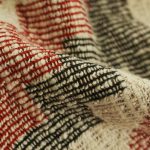When it comes to the debate between cashmere and wool, the distinction is more than just about warmth and softness. The nuances between these two fibers go beyond what meets the eye.
Have you ever wondered why cashmere is often considered more luxurious than wool? Let's unravel the intricacies that set these natural materials apart, revealing the unique characteristics that make them stand out in the world of textiles.
Table of Contents
Key Takeaways
- Cashmere is finer and softer than wool, offering luxurious warmth and insulation.
- Wool, especially Merino, is durable and cost-effective, ideal for everyday wear.
- Cashmere symbolizes luxury with delicate care needs, while wool is versatile and machine-washable.
- Understanding differences in quality, warmth, and care helps choose between cashmere's luxury and wool's practicality.
Cashmere and Wool Sources
When it comes to sourcing materials, cashmere is exclusively obtained from Kashmir goats, whereas wool is derived from various animals such as sheep, goats, and alpacas. The luxurious cashmere fibers are meticulously hand-combed from the soft undercoat of Kashmir goats during their molting season, resulting in limited production quantities due to the delicate and time-consuming process. In contrast, wool, including renowned Merino wool from Australia, is sheared annually from a broader range of animals, making it more readily available in the market.
Inner Mongolia in China stands out as a significant hub, contributing to almost 70% of the global cashmere production. This region's climate and terrain provide an ideal environment for raising Kashmir goats. On the other hand, Australian Merino wool is celebrated for its exceptional quality, favored by many for its fine texture and natural properties. While cashmere production hovers around 15,000-20,000 tons annually, the global wool output surpasses two million tons each year.
Fiber Composition Variances
When comparing cashmere and wool, it's essential to understand the variances in their fiber composition.
Cashmere boasts finer and softer fibers, while wool tends to be thicker and rougher in texture.
These differences in fiber properties contribute to the distinct feel and qualities of each material.
Material Origins
Originating from distinct animal sources, cashmere and wool exhibit notable differences in fiber composition. Cashmere's fine and soft fibers contrast with the thicker and coarser texture of wool.
- Cashmere: Sourced from the fine undercoat of Kashmir goats
- Wool: Derived from the fleece of sheep, goats, and alpacas
- Cashmere: Fibers are softer and finer, with a diameter of 14-16 microns
- Wool: Fibers are thicker and coarser compared to cashmere
These material origins play a significant role in shaping the unique characteristics of cashmere and wool, influencing their quality and applications in the realm of textiles.
Fiber Properties
Coming from distinct animal sources, the fiber properties of cashmere and wool showcase significant variances in texture and warmth due to their differing compositions.
Cashmere, with fibers measuring around 14-16 microns in diameter, offers a softer and more luxurious feel compared to wool. The pointed shape and thicker fibers of wool, in contrast to the round fibers of cashmere, influence the materials' texture and warmth.
Cashmere's larger fleece size contributes to its lightweight nature and superior insulating properties, making it 8 times warmer than wool for the same coverage area. Additionally, the high natural curliness of cashmere fibers allows for better air retention, enhancing its warmth and breathability when compared to wool.
Texture Variation and Feel
In comparing cashmere and wool, the texture and feel of the fibers play a significant role in determining the overall quality and comfort of the material. When it comes to cashmere and wool, the differences in texture and feel are quite distinct:
- Cashmere fibers are much finer than wool, measuring around 14-16 microns in diameter.
- Cashmere feels softer to the touch than wool, offering a luxurious and smooth texture.
- Wool may feel rougher and scratchier due to its coarser fibers in comparison to cashmere.
- The delicate nature of Cashmere fibers makes them prone to pilling and snagging more than wool.
These variations in texture and feel contribute to the different experiences one has when wearing garments made from cashmere or wool. Cashmere's luxurious softness and fine texture make it a popular choice for high-end clothing items, ensuring both quality and comfort.
Warmth and Insulation Differences
When it comes to warmth and insulation, cashmere truly shines with its reputation for being eight times warmer than regular wool.
The high natural curliness of cashmere fibers allows it to retain more air, adding to its exceptional insulation properties.
While wool also provides warmth, cashmere's efficiency in insulation sets it apart as the ideal choice for colder climates.
Cashmere's Natural Warmth
Indisputably, cashmere stands out for its remarkable natural warmth, surpassing regular wool by eightfold and excelling in insulation for cold climates. The unique properties of cashmere make it an exceptional choice for those seeking unparalleled warmth and comfort. Here are some key aspects highlighting cashmere's natural warmth:
- Cashmere's fibers are eight times warmer than regular wool.
- The natural curliness of cashmere fibers allows for better air retention, enhancing insulation.
- Cashmere's superior insulation properties effectively regulate body temperature in various climates.
- Cashmere traps heat efficiently without adding bulkiness, providing warmth without weight.
Wool's Insulating Properties
Cashmere's exceptional warmth is often contrasted with wool, particularly when considering their distinct insulating properties. While both materials provide warmth, cashmere, sourced from the cashmere goat, stands out for its superior insulation capabilities.
Cashmere's fiber is finer and softer than traditional wool, allowing it to trap more air and create a layer of warmth close to the body. This quality makes cashmere incredibly efficient at retaining heat, making it eight times warmer than regular wool.
On the other hand, wool, especially from Merino sheep, offers good insulation properties but may feel rougher against the skin compared to the luxurious softness of cashmere. The high natural curliness of cashmere fibers further enhances its ability to retain air, making it a preferred choice for those seeking lightweight warmth.
Durability and Longevity Contrasts
Comparing cashmere and wool, the durability and longevity of these fibers reveal distinct differences in their lifespan and resilience. When it comes to durability and longevity, cashmere and wool showcase varying levels of resilience and lasting power. Here are some key points to consider:
- High-quality cashmere can last over two decades with proper care, showcasing its durability and longevity.
- Merino wool, especially from Merino sheep in Australia, is known to be more durable than cashmere, offering a longer lifespan.
- Cashmere is considered a luxury material due to its longevity, with well-maintained pieces lasting for many years.
- Cashmere's longevity adds to its value as an investment piece, making it a sought-after choice for high-end garments.
Understanding the differences in durability and longevity between cashmere and wool can help you make informed decisions when choosing between these premium materials for your wardrobe.
Maintenance and Care Varied Approaches
When it comes to caring for cashmere and wool, their maintenance requirements diverge significantly, with cashmere demanding more delicate handling compared to the more low-maintenance wool. Cashmere, known for its luxurious softness, requires special attention to prevent pilling and snagging. It's best to use a cashmere comb to gently remove any pills that may form, and infrequent cleaning is recommended to maintain its quality.
Cashmere contains lanolin, which adds to its softness but also requires careful handling. On the other hand, wool, being more robust, can withstand regular washing and handling. Wool fibers retain more air, providing excellent insulation, making it the best choice for various everyday products. While wool can be machine-washed, cashmere is better off with steam cleaning to preserve its luxurious feel and appearance.
Understanding these differences between cashmere and wool is essential to ensure the longevity and quality of these premium materials.
Price Disparities
Noticing the price disparities between cashmere and wool sheds light on the value and luxury associated with these premium materials. When exploring the difference between cashmere and wool prices, several key points emerge:
- Cashmere is better: The higher price of cashmere reflects its superior quality and luxurious feel compared to wool.
- Premium cashmere products: Top-tier cashmere items command significantly higher prices due to their exceptional softness and warmth.
- Luxury materials: The cost difference between cashmere and wool emphasizes the luxury status associated with cashmere garments.
- Market demand: Factors such as limited production, quality of fibers, and market demand contribute to the varying prices between cashmere and wool.
Understanding the price variations between these materials provides insight into why cashmere is often viewed as a symbol of luxury and exclusivity, enticing consumers with its unparalleled quality and comfort.
Overall Quality Distinctions
Moving from the discussion on price disparities between cashmere and wool, it becomes evident that the overall quality distinctions between these two materials play a significant role in their perceived value and functionality.
Cashmere, obtained from the fine undercoat of cashmere goats, is considered more luxurious due to its rarity and the labor-intensive process of harvesting the fibers. Cashmere garments are known for their exceptional softness, lightness, and superior insulation properties, providing a premium wearing experience.
On the other hand, wool, especially fine types like Merino wool, is more abundant and cost-effective, making it a popular choice for everyday wear. Wool is highly durable and suitable for activewear and outdoor clothing, outlasting cashmere in rugged use.
While the limited production of cashmere results in a higher price point and exclusivity, wool offers versatility and resilience. Understanding the different qualities of cashmere and wool allows consumers to make informed choices based on their preferences and needs.
Frequently Asked Questions
What Is Better Wool or Cashmere?
Cashmere provides exceptional warmth and luxury, while wool offers durability and affordability. Personal preferences for warmth, texture, and budget dictate the choice between the two. I find cashmere's exclusivity and softness appealing.
Is 100% Wool the Same as Cashmere?
In a soft symphony of fibers, 100% wool dances distinctly from cashmere. Wool, a diverse ensemble sourced from various animals, contrasts cashmere's luxurious solo act, hailing solely from Kashmir goats' tender undercoat.
What Lasts Longer Wool or Cashmere?
In my experience, wool tends to last longer than cashmere. With regular care, wool garments can withstand everyday use and maintain their quality over time. However, both fabrics can be durable with proper attention.
How Can You Tell Cashmere From Wool?
Feeling cashmere and wool, I discern by touch. Cashmere, softer and finer, from Kashmir goats, while wool, coarser, from sheep or goats. The luxurious warmth of cashmere outshines wool, its scarcity adding to allure.
- Tetron Fabric for Marine Applications: Durability and Use Cases - June 18, 2025
- Tetron Fabric for Outdoor Furniture: Weather Resistance and Care - June 18, 2025
- Tetron Fabric for Wall Coverings: Style and Application Tips - June 18, 2025






